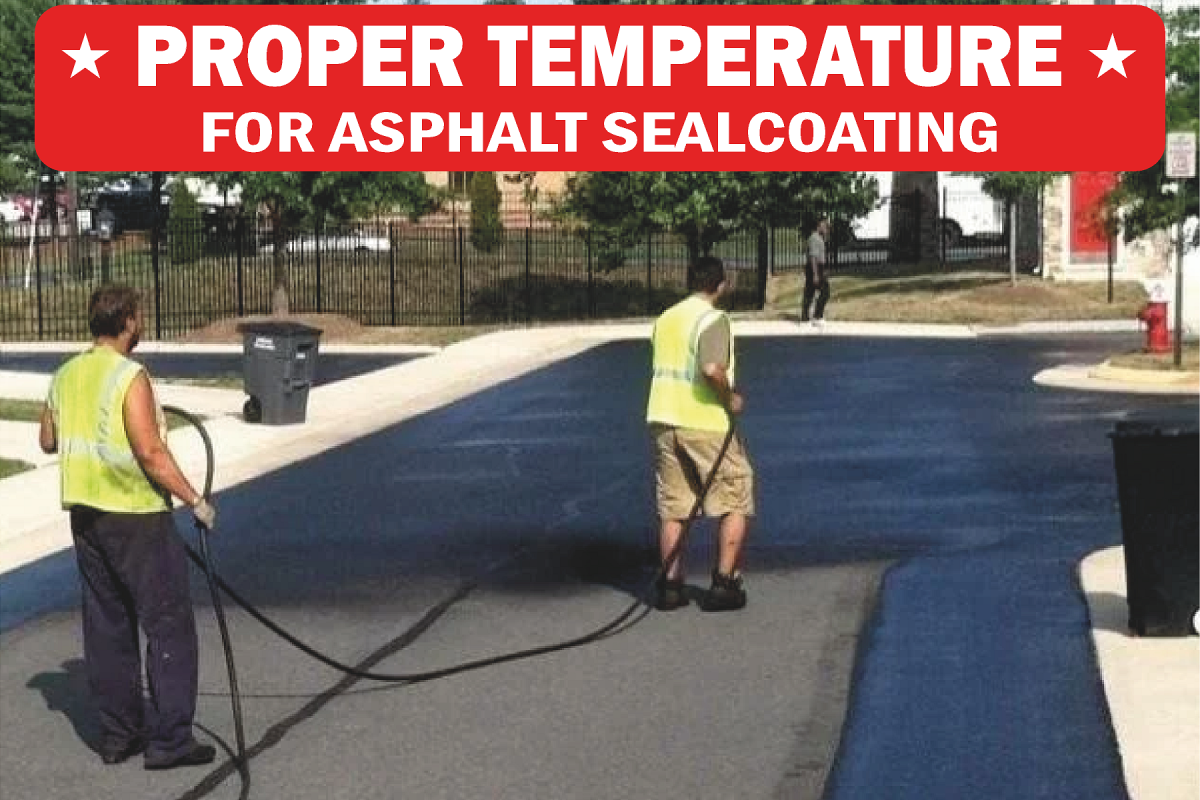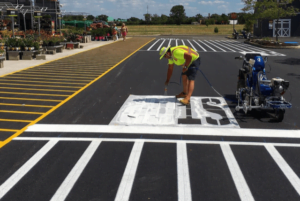Asphalt sealcoating is an essential maintenance task that helps protect and extend the lifespan of your asphalt pavement. It acts as a barrier against the damaging effects of sunlight, water, and chemicals, preventing cracks and deterioration. However, the success of sealcoating largely depends on weather conditions, particularly temperature.
Charlotte experiences all four seasons, with some winters being very cold and some summers being hot and humid. Modern asphalt sealers are water based and require proper conditions to dry and cure properly. Below, we will highlight some of those considerations, to gain the best performance from the sealcoating application. In this article, we will discuss the ideal temperature range for asphalt sealcoating to ensure the best results.
Temperature Considerations
When it comes to sealcoating, temperature plays a crucial role. Both the air temperature and the temperature of the pavement surface are important factors to consider. The ideal temperature range for sealcoating is typically between 50°F (10°C) and 85°F (29°C). However, it’s important to note that these temperatures are just guidelines, and other factors can also influence the success of the sealcoating process.
Air Temperature
The air temperature should be taken into account when planning for asphalt sealcoating. It is recommended to avoid sealcoating on extremely hot or cold days. High temperatures can cause the sealcoating material to dry too quickly, leading to poor adhesion and a less durable finish. On the other hand, extremely low temperatures can prevent the sealcoating material from curing properly, resulting in a weaker bond.
It is generally advisable to wait for a day with moderate temperatures, ideally in the range of 50°F to 85°F. This temperature range allows for optimal drying and curing of the sealcoating material, ensuring a long-lasting and effective protective layer for your asphalt pavement.
Pavement Surface Temperature
In addition to air temperature, the temperature of the pavement surface is another critical factor to consider. The surface temperature should be above 50°F (10°C) and rising. If the pavement surface is too cold, the sealcoating material may not adhere properly, resulting in poor coverage and reduced effectiveness.
It is important to note that the pavement surface temperature can vary depending on factors such as shade, time of day, and recent weather conditions. Therefore, it is recommended to use a reliable infrared thermometer to measure the pavement surface temperature accurately before proceeding with sealcoating.
Other Factors to Consider
While temperature is an essential factor for successful sealcoating, there are other considerations to keep in mind:
- Humidity: High humidity can prolong the drying time of the sealcoating material. It is best to choose a day with moderate humidity levels for optimal results.
- Rain: Parking lot sealcoating should not be done if rain is expected within 24-48 hours. Moisture can interfere with the drying process and compromise the effectiveness of the sealcoating.
- Wind: Strong winds can cause the sealcoating material to dry too quickly, leading to inadequate bonding. It is advisable to choose a calm day for sealcoating.
Conclusion
Asphalt sealcoating is a vital step in maintaining the longevity and appearance of your asphalt pavement. To achieve the best results, it is important to consider the temperature conditions. Aim for a day with moderate air temperatures between 50°F (10°C) and 85°F (29°C) and ensure that the pavement surface temperature is above 50°F (10°C) and rising. Additionally, take into account factors such as humidity, rain, and wind to ensure optimal conditions for sealcoating. By following these guidelines, you can protect your asphalt pavement and extend its lifespan.
In the Charlotte area, our ideal sealcoating season starts in late April and runs thru late October. If you manage a large facility and would like to schedule a free parking lot evaluation, please contact CARO-LINE today!






